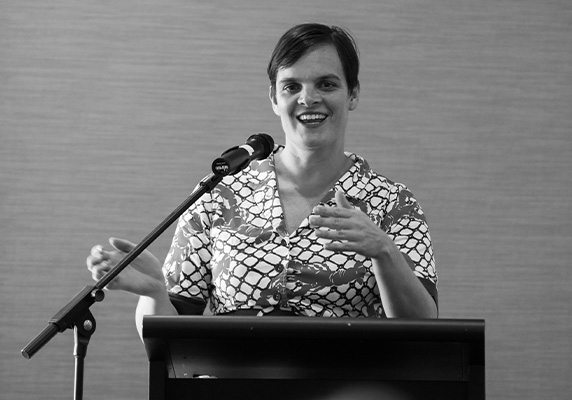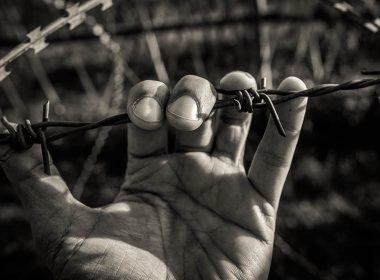According to a recent report commissioned by National Legal Aid, a funding shortfall of nearly half a billion dollars threatens the supply of legal services to vulnerable people.
The Justice on the Brink report, released on 22 November, revealed that $484 million in funding is required to expand family and civil law services, ensure that means testing can be carried out, and meet the salaries of lawyers providing Legal Aid services.
The report, produced by Impact Economics and Policy, raises concerns about the restrictions on Australian Legal Aid services in the face of growing demand, and social and economic pressures. One of those concerns is the strict means testing imposed, which means many people on low incomes or in unstable housing or employment are found to be earning just enough to disqualify them from accessing Legal Aid – despite their precarious financial circumstances coupled with the high costs of litigation. Concerningly, although 13 per cent of Australians live in poverty, under the strict income and assets tests only 8 per cent of all households are currently eligible for a Legal Aid grant.
Australian Legal Aid Commissions provide a mixed model of service delivery, in which over 70 per cent of approved Legal Aid cases are assigned to external practitioners. Without the significant funding required to pay these legal practitioners, there is a distinct lack of incentive for private lawyers to accept work, and particularly in regional and remote communities.
The $484 million required to prevent “immediate threat of supply failure” comprises an estimated $317 million needed to reach the recommended share of family and civil grants; $98 million for the recommended means testing coverage; and $69 million to ensure legal practitioners are paid in accordance with the consumer price index.
As the report states: “Between the very poor and the rich, a large cohort does not have functional access to the legal system they rely on and pay for through their taxes. As one Legal Aid lawyer put it in an interview for this report: ‘Most people, even those who are on six-figure incomes, don’t carry around the sort of cash that they need to put up front to run litigation.’”
‘A large cohort does not have functional access to the legal system they rely on and pay for through their taxes’
The Commonwealth Government is currently reviewing the National Legal Assistance Partnership, responsible for the funding of the legal assistance sector. The Justice on the Brink report indicates that investing in Legal Aid would have consequent economic and social benefits to the tune of $600 million, owing to the savings made in effective dispute resolution (preventing further legal time and costs), improved quality of life, reduced pain and suffering, and the avoidance of costs associated with responding to emergency health, housing and crisis support.
Katherine McKernan, Executive Director of Legal Aid NSW, says, “Unfortunately, the shortfall of $484 million was not a surprise. The Justice on the Brink report has updated the modelling contained in the Productivity Commission Access to Justice Report, which recommended immediate additional funding of $200 million just under 10 years ago. The [amount of] $484 million is a conservative updating of this as, for example, the Legal Aid fees paid to lawyers in 2014 were already quite low and so an increase of 18 per cent is conservative in that context.”
McKernan says, “There are large gaps in the data both in terms of unmet legal need and in better understanding the services provided by the legal assistance sector.”
“The main Commonwealth funding mechanism for legal assistance, the National Legal Assistance Partnership, is currently being reviewed. One of our key recommendations as part of this is that the Commonwealth needs to fund a regular survey to better capture unmet legal need and better resource legal assistance services so that they can better capture current service delivery and the outcomes achieved in providing legal assistance to people experiencing disadvantage.”

Dr Emily Millane is the Lead of Economic Security and Governance at Impact Economics and Policy. She explains that the lack of comprehensive data was broadly acknowledged in the sector.
“It’s costly to implement a uniform data gathering system, and it’s something we weren’t asked to cost [for this report]. The people in the sector have said it’s something that is sorely needed. It would require substantial resources in terms of building systems and updating it over time. But it would tell us who’s presenting, their gender, where they’re from, and their age, which is not routinely collected at the moment.
“That would give us a clear picture of the people not having their legal services met or the lack of follow up services they’re experiencing. Without that data about who is presenting, and those who aren’t having their needs fully met after presenting, or people who are not even accessing legal services because they can’t afford it, that’s a lot harder to measure and address.”
Issues across the legal assistance sector
McKernan tells LSJ, “The Justice on the Brink report only assesses legal need and resourcing needs in the areas of family and civil law, not crime. The impact of the under-resourcing is that people need to be very poor to access legal assistance. This can have significant impacts, particularly for example for women and children experiencing domestic and family violence who – without appropriate legal advice – may either choose to remain in violent relationships or make decisions that impact their ongoing financial independence.”
The shortage of funding means that qualified, experienced lawyers avoid taking on work that is time intensive and poorly paid.
McKernan explains, “The legal assistance sector is facing workforce issues across Australia, but particularly in rural and remote areas. This is due either to the low level of fees paid by Legal Aid or the low wages in the broader legal assistance sector. We are facing a market supply issue, so that without additional funding for fees and wages across Legal Aids, Aboriginal and Torres Strait Islander Legal Services, Community Legal Centres and Family Violence Prevention Legal Services, there will be ongoing and increased gaps in service provision and delays in providing services.”
Millane says, “During the interviews [with legal practitioners] in different states and territories, the effect of underfunded Legal Aid was bigger in certain rural, remote areas. In rural Victoria, for example, one practitioner spoke to me about how it wasn’t economic for her firm to do any Legal Aid work despite them being the only firm in town doing that type of Legal Aid work. That gap in access between metropolitan areas and regional areas was of note.”
She adds, “As a lawyer, I didn’t fully understand before undertaking this report that the bulk of Legal Aid work is done by lawyers who aren’t necessarily within a Legal Aid clinic. Even if the lawyers paid to do this work are sitting in a private firm, they’re paid less to do Legal Aid work and that’s a big reason they’re saying they can’t afford to do this anymore.”
‘Even if the lawyers paid to do this work are … in a private firm, they’re paid less to do Legal Aid work’
McKernan says, “Unfortunately, the current funding situation means that many people miss out on legal support, as they aren’t eligible for a Legal Aid grant but don’t have the financial resources to pay for a private lawyer. This can result in people not dealing with legal issues early, which can make the impact of the issue much more severe, or choosing to self-represent or manage the issue themselves, which can have significant impacts in terms of the outcomes; these could include job loss, financial strain and housing issues.”
Millane says, “An observation by the Productivity Commission in 2014 was that to access Legal Aid in Australia, you have to be [among] the very poorest percentage of Australians. For people who are in poverty by any objective analysis, let alone vast numbers in the middle class, the rule of law is a theoretical thing. The idea that you’re governed by the same rules and conventions as everyone else is false. That’s premised on us being able to access the law and get legal assistance when we need it. If any person can’t do those things, they’re not the same before the law and so it creates the haves and have nots in terms of the ability to enforce their legal rights.”
The NSW perspective
Monique Hitter is the Chief Executive Officer of Legal Aid NSW. She says of the report, “It was great to get a really rigorous analysis. We know that the demand for legal assistance outstrips the supply at a national level. And so, to get a really robust economic analysis of what that looks like from a from a dollars and cents point of view, but also from a social cost point of view, was really great. Having that allows us to have really solid ground on which we then talk about what that unmet legal need is and how much it would cost to meet that unmet legal need.”
Hitter is concerned about the broad consequences of continuing to under-fund the legal aid sector.
“I think it’s important to consider that in family law, for example, 80 per cent of matters in the FCF COA [Federal Circuit and Family Court of Australia] have been identified as having a risk of domestic and family violence, which can mean that, if [people] don’t have legal assistance, they can make decisions without legal advice and support. So, they might return to an unsafe environment or agree to parenting arrangements that might not be the best for their children, or agree to a financial arrangement that puts them at risk of ongoing poverty.”
She adds, “The research shows that when people leave issues, they become more difficult to resolve and the longer they leave them the more difficult they are to resolve, which leads to those issues becoming more costly to resolve as well. There’s a flow-on impact, and we’ve seen research which clearly makes a link between things like housing and homelessness and the criminal justice system.”

Hitter refers to the cost-benefit analysis of the Justice on the Brink report, which reveals that, if provided with adequate funding, National Legal Aid could deliver $600 million in economic and social benefits.
She says, “It’s important to consider that where we are not resolving legal issues early, it will cost more to resolve down the track. There’s also a social cost to not resolving those legal issues, which impacts on other parts of the system like the criminal justice system, or the correction system, or the homelessness system. So, resolving those issues early will save costs down the track.”
The report highlights the problem of poor fees for private legal practitioners, which disproportionately affects regional and remote areas.
Hitter says, ““We are very cognisant that our ability to pay private practitioner fees really impacts on the availability of private practitioners, particularly in regional areas and remote areas. Places like the northwest of New South Wales for example, in the far south coast, and in the far west are areas where we know that there is real pressure on the private practitioner market to do legal aid work.”
She is concerned that the cumulative effect of private legal practitioners pulling out of legal aid work because it is not financially viable for small, regional firms will result in increased demand on other areas of the justice system.
“Private legal practitioners are incredibly important to us in helping us deliver legal services in both the state and the Commonwealth jurisdiction. In the Commonwealth jurisdiction, the rates and fees have stayed the same over 15 years, which is $150 an hour. I have no doubt that that impacts the availability of private practitioners to do legal aid work, and that has a flow-on impact of increasing demand on our in-house practice and also creating more demand on the court system.”
Funding boost an ideal outcome
McKernan says, “National Legal Aid is calling for an ongoing commitment to all existing Legal Aid funding: $484 million to address the current gaps identified by the Productivity Commission and the Justice on the Brink report and a further $40 million to expand and support the Independent Children’s Lawyer Program. It would be great to have this permanently funded, but a commitment to five-year funding would assist.”
She adds, “Having adequately funded Legal Aid services is an essential part of Australian society and greatly contributes to the overall wellbeing of the community. The cost benefit of current Legal Aid funding has been identified as $600 million per annum. More than half of these savings are in supporting women and children.”
Millane adds, “We know that under current Budget practices, you need to find savings if you’re going to spend, and that usually comes out of the same portfolio. We haven’t provided recommendations on where the funding should be drawn from, but we’d emphasise the importance of this allocation.”




